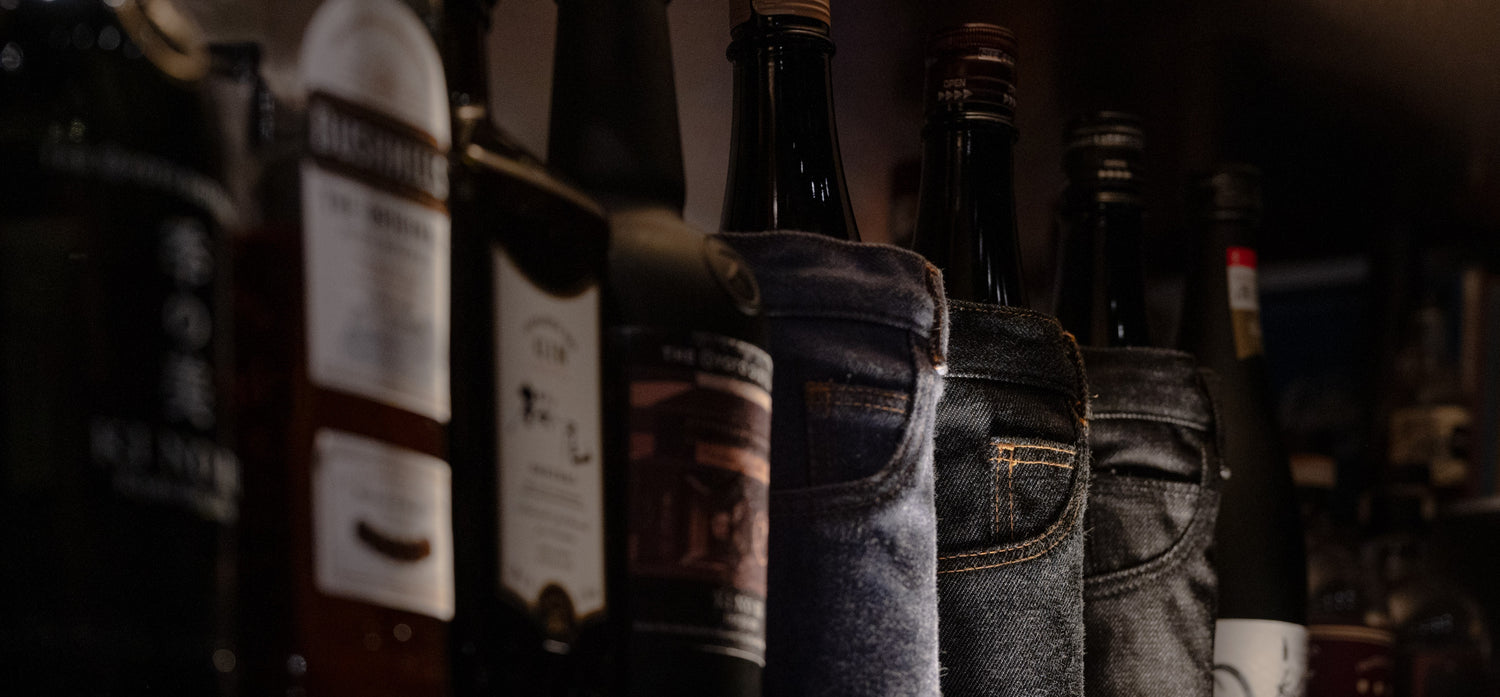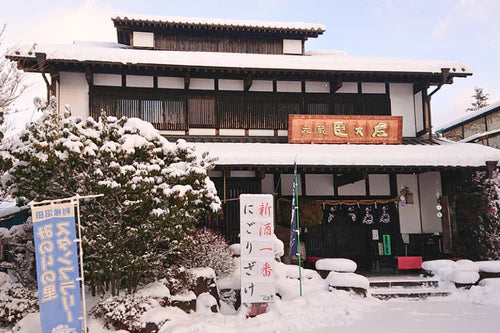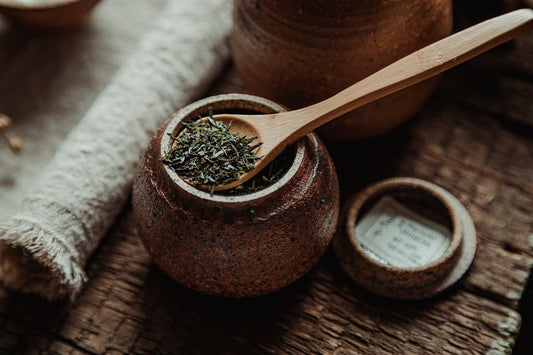Have you ever tried warm sake before? If not, you definitely should! Sake tastes totally different when adjusting the temperature. Even warming it by 41°F (5°C) more than room temperature will change the flavor slightly.
This diverse Japanese beverage is one of only a few alcoholic drinks that you can enjoy warm and cold, no one likes a warm beer! Some sake is even specially crafted for it to be drunk hot.
As it can be tough to know which sake is best for enjoying warm, we will help guide those interested in trying it hot but don’t know where to start! Sake, in general, can be complex. In fact, there are six different temperature levels classified as warm sake, and at each one, the aromas and flavors can differ wildly.
Keep reading for our specific recommendations for which is best suited for heating and the best hot sakes on offer here at Sakura Town.
CONTENTS
Best Hot Sake Brands
HOTTO
Denim Sake
HOTARU
What food to pair with hot sake
Best Hot Sake for Sushi
Which sake is good to enjoy hot
How heating sake affects the flavor
Different Types of Hot Sake
Try hot sake to experience new tastes
Best Hot Sake Brands
There are some sake brands that create specialized sake made to be warmed. One of the most famous brands in the world that you might have heard of before is Dassai. Dassai is a brand that only brews premium Junmai Daiginjo sake (rice polishing ratio of 50% or under), and it is considered the best quality in Japan, which is why it’s become popular abroad as well.
As well as the low polishing ratio of all its sake, they exclusively use Yamada-Nishiki rice in production. This type of rice is the king of sake rice in the industry and is used to create all sake from Dassai.
Dassai brews several sake varieties based on the rice polishing ratio. These are Dassai 45, 39, and 23. While these are usually enjoyed chilled, the more floral Dassai 45 also tastes excellent warmed.
Kenbishi is another sake brand that produces tasty hot sake, and it has been brewing sake under this name since 1505! Its world-renowned "Kuromatsu" Honjozo sake is the most well-known of its selection for drinking warm.
Kenbishi states what sake grade each product is, but they don't reveal the exact rice polishing ratio, which makes it more intriguing! The varieties they offer, "Mizuho" and "Kuromatsu," can also be enjoyed at room temperature or cold.
Here at Sakura Town, two of our best warm sake are also those brewed using Yamada Nishiki rice, the same that Dassai uses. These are "No Nature No Life" and "Daiginjo The." While our other sake options that can be enjoyed warm are "Hotto," "Denim Sake," and "Hotaru," which we will introduce below.
HOTTO
The first Sakura Town sake that we recommend for drinking warm is HOTTO. It gets its name because it was specially brewed to be drunk hot! It has a clear dry taste, and increasing its storage temperature enriches the flavors further.
HOTTO is a sake produced in the Japanese prefecture of Tottori, which is famous for its beautiful nature, seafood, and sake. We recommend warming it to 122-140°F (50-60°C) to enjoy it at its absolute best. Plus, it will taste even better if you pair it with dishes that include hot vegetables, soups, and other warm dishes like grilled meats.
 Learn more about HOTTO
Learn more about HOTTO
Denim Sake
Next up is our Denim Sake, produced in the Okayama prefecture, which is most famous for being the Japanese denim region. The rice used to make this sake is 100% Gin-no-Sato, a new rice variety that has grown in popularity over the last decade and a half.
Denim Sake is a wonderfully dry sake with a mild flavor, so heating it to 104-122°F (40-50°C) gives it an enhanced aroma and taste. We like to enjoy it with a wide range of cuisines, including French, Italian, especially pizza, and Japanese, of course!

Learn more about Denim Sake
HOTARU
The third best hot sake from our range is HOTARU. As with Denim Sake, it is best to heat it to between 104-122°F (40-50°C) to enjoy this wonderful sake fully. It is a well-balanced sake as it isn’t sweet, but not dry either.
When it comes to what to enjoy it with, it pairs well with all types of appetizers, poached fish with tomatoes, garlic, and some olive oil (acqua pazza style), and one of Japan’s most popular dishes, shabu-shabu.
Interestingly, the brewery uses table rice for HOTARU instead of the regular sake rice normally used for brewing. The rice has still been polished down to 80% of its original size, and like some of our other sake, it has been grown without pesticides.
Some would argue that using this type of rice results in a lower quality of sake as it’s more challenging to brew with. But, the brewery that produces it has taken extra care in the process, which has resulted in a delicious sake.
The idea behind this sake came from the viewpoint of reducing food waste while promoting the Gifu prefecture, where the rice and sake are both produced.

Learn more about HOTARU
What food to pair with hot sake
You’ve probably already realized that drinking sake with food is the ultimate combination, but what foods pair best with hot sake?
Well, we’ll start by stating the obvious, that warm sake is perfect for enjoying with Japanese food, whether that’s sushi, sashimi, shabu shabu, ramen, grilled fish or meat, and cooked vegetables.
That said, warm sake also pairs nicely with other cuisines. We recommend drinking hot sake with Italian, French, Chinese, and even Spanish cuisines as a change from only drinking it with Japanese.
For example, it goes well with rich dishes, including those with tomatoes and cheese, and dishes using spices such as paprika and garlic. If you enjoy French cuisine, then creamy sauces with poultry dishes, especially duck, go amazingly well with hot sake due to its richness.
Some Chinese food can be spicy, especially Sichuan and Hunan cuisines. While you might think that warm sake with spicy food isn’t going to work, the alcohol and flavor of the hot sake combined actually help to soften the spiciness.
Best Hot Sake for Sushi
When it comes to which hot sake is best for sushi, we want to say that sushi is generally best served with clear, dry sake, whether hot or cold. Also, as sushi uses vinegared rice as its base, it is best served with sake that is not high in alcohol content. That said, the sharpness of dry sake goes well with the raw fish part of sushi or sashimi if you have it on its own, as it neutralizes the fatty taste of some sushi dishes.

As with anything, you’ll have your preferences when it comes to sake, so finding a pairing of hot sake with sushi that you enjoy, is down to experimenting with different options.
Which sake is good to enjoy hot
While sake can be drunk hot, we do not recommend drinking all types of sake warm. One sake type that you definitely can’t drink warm is sparkling sake, which should be extremely chilled, as you would when drinking champagne or prosecco.
The ideal sake for heating is one with a rich, full-bodied flavor. When warming this style of sake, these attributes become even more prominent, tingling your taste buds.
That said, you can also warm sake with a light, clean flavor, as doing so won't disrupt the balance of the taste. It actually draws out the hidden acidity, making it seem like an entirely new sake!
Of course, these types of sake can also be enjoyed cold or at room temperature, depending on your preference. We love that you can enjoy sake at different temperatures, as it makes it the perfect drink for any occasion. No matter your mood, the food you're eating, or the temperature of the weather, sake is always great!
How heating sake affects the flavor
As mentioned earlier, the aroma and taste of sake can change greatly when warmed up, as sake is a delicate drink.
Warming sake in a hot water bath is the best way to reach the temperature you want to enjoy it at. The quicker method is using a microwave oven, which is still acceptable.
With that said, you should be careful when warming sake, as if you overheat it, the alcohol will evaporate. The maximum temperature you should heat sake to is 131°F (60°C), as alcohol’s evaporation temperature is around 78°C.
We also recommend not to cool sake after you’ve heated it, as this can affect the flavor, but not in a good way because sake's flavor and aroma change at high temperatures. So, even if it returns to room temperature, the flavor, and aroma won't return to the original taste of a new bottle.
Different Types of Hot Sake
We mentioned in the introduction that there are six different levels of warm sake, so now we'll introduce each one to you.

In the past, the name came from the fact that restaurants used it as a temperature indicator, but nowadays, restaurants rarely designate the temperature of sake. So, if you ever order Kanzake (hot sake) in Japan, know that the temperature could vary depending on the restaurant.
In the table above, you can see the descriptions of each temperature level to get a better idea of the aroma and flavor you'll experience. Now you know these, why not experiment at home to find your preferred temperature?
Of course, this can change depending on the season, your mood, and the food you'll be eating with it.
Try hot sake to experience new tastes
After reading our article, you should now have a better understanding of which sake is best to enjoy hot. We've told you about five of our best hot sake from our range of hidden sake gems you can only buy at Sakura Town.
If you want to try warm sake made from Yamada Nishiki rice, then go for No Nature No Life or Daiginjo The. Otherwise, Denim Sake and Hotaru are excellent options, and then there's the fact that Hotto was specially brewed to be drunk hot!
Also, we encourage you to sample sake at the six different temperatures of hot sake that we listed above so you can see how a slight temperature change can affect the aroma and flavor.
To learn more about sake, make sure to read our comprehensive sake guide that covers many topics on this popular drink.





